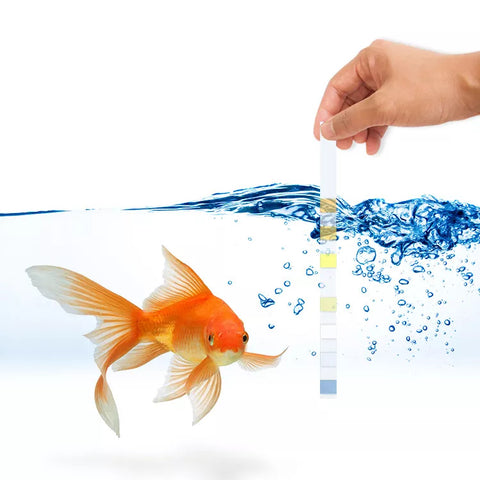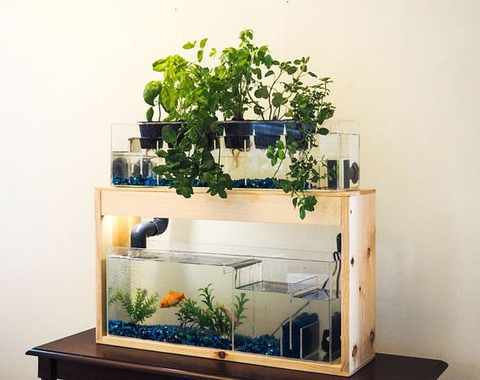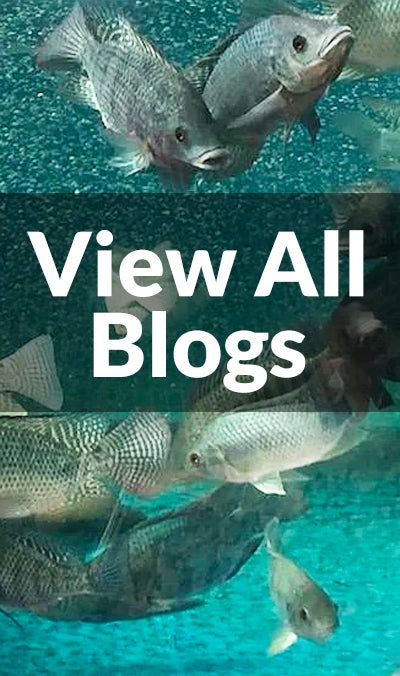Imagine having a self-sustaining ecosystem right on your desk, where fish and plants thrive together in harmony. This is aquaponics, a gardening method that combines aquaculture (raising fish) and hydroponics (growing plants without soil) in a symbiotic environment. With a mini desktop aquaponics system, you can enjoy the benefits of this innovative method on a small scale, perfect for homes, offices, or classrooms.
A desktop aquaponics system is not only a fascinating and educational project but also a practical way to grow fresh herbs and small vegetables while maintaining a beautiful and engaging aquarium. This compact setup brings the tranquility of nature indoors, enhancing your living space with both visual appeal and a touch of greenery.
In this blog, we will guide you through the process of building your own desktop aquaponics system. From understanding the basics of aquaponics to selecting the right materials, assembling the system, and maintaining it for long-term success, you'll find everything you need to get started. Whether you're a gardening enthusiast, an aquarium hobbyist, or simply looking for a unique project to enhance your space, this guide is for you. Let's dive in and explore the wonderful world of aquaponics!
How Aquaponics Works
1. Nitrogen Cycle:
At the heart of aquaponics is the nitrogen cycle, a natural biological process that is crucial for maintaining water quality. It begins with fish producing ammonia as a waste product. The beneficial bacteria convert this ammonia into nitrites and into nitrates that serve as a nutrient for plants. The aquaponics cycle completes as plants absorb nitrates from the water, thereby purifying it. The clean water circulates back to the fish tank, restarting the cycle.
2. Symbiotic Relationship:
This harmonious relationship of fish, plants, and bacteria creates a closed-loop system where each component supports the other, resulting in healthier fish and robust plant growth.
3. Nutrient Circulation:
As fish waste breaks down into ammonia, it transforms into nitrites and nitrates through bacterial processes. These nitrates are then transported to the plant bed, where they serve as essential nutrients for plant growth. The plants uptake these nutrients, effectively filtering the water, which is then recirculated back to the fish tank. This continuous circulation ensures that nutrients are utilized optimally, promoting a balanced and thriving ecosystem.
Planning Your Desktop Aquaponics System
Here are several considerations you need to make when planning your aquaponics system to ensure it is both functional and aesthetically pleasing.
1. Size and Dimensions:
- Measure the available space on your desk or chosen location. Ensure there is enough room to accommodate the fish tank, grow bed, and necessary equipment such as pumps and lighting.
- Keep in mind the height and weight of the system when filled with water and plants. A sturdy, level surface is essential to support the system.
2. Lighting:
- Adequate light is crucial for plant growth. If natural light is limited, consider investing in a grow light. LED grow lights are energy-efficient and can provide the necessary spectrum of light for your plants.
- Position your system near a window with indirect sunlight if possible, but avoid direct sunlight, which can cause overheating and algae growth.
3. Accessibility and Maintenance:
- Ensure that your system is easily accessible for feeding fish, planting, and performing regular maintenance tasks such as water changes and checking water parameters.
- Consider the proximity to electrical outlets for powering pumps and lights.
4. Aesthetics and Ambiance:
- Choose a location where you can enjoy the visual and calming benefits of your aquaponics system. A well-placed system can enhance the ambiance of your living or working space.
Choosing the Right Fish and Plants
Selecting the right fish and plants is crucial for the success of your mini aquaponics system. The right choices will depend on factors such as the size of your system, environmental conditions, and your personal preferences.
1. Fish Selection:
- For beginners, hardy fish species that can tolerate a range of water conditions are ideal.
- Ensure the fish species you choose can thrive in the size of your tank. Overcrowding can lead to stress and poor water quality.
- Consider the dietary needs and compatibility of the fish. Avoid mixing species that may be aggressive towards each other.
2. Plant Selection:
- Leafy greens are often the best choices for a mini desktop system because of their small size and fast growth. Examples include lettuce, basil, mint, and spinach.
- If your system relies on artificial lighting or receives limited natural light, choose plants that thrive in low light conditions.
- Select plants with shallow root systems that will not outgrow the confines of the grow bed.
Materials and Tools Needed
Here's a detailed list of what you’ll need to build a mini desktop aquaponics system.
1. Fish Tank:
- A small aquarium or container to house the fish. For a desktop setup, a tank with a capacity of 5-10 gallons is ideal.
- Ensure the tank is made of durable material such as glass or acrylic.
2. Grow Bed:
- A shallow container to hold the grow media and plants. The size should match the dimensions of your fish tank.
- Options include plastic trays or repurposed containers.
3. Water Pump:
- A submersible water pump to circulate water between the fish tank and the grow bed.
- Choose a pump with adjustable flow rate to match the size of your system.
4. Tubing:
- Flexible tubing to connect the water pump to the grow bed.
- Ensure the tubing is food-safe and appropriately sized for your pump.
5. Grow Media:
- A medium to support plant roots and provide surface area for beneficial bacteria. Common choices are clay pebbles, gravel, or expanded shale.
- Ensure the media is inert and won't affect water pH.
6. Biofilter:
- A separate biofilter or filtration system if using NFT or DWC methods.
- Biofilter material like bio balls or sponge can enhance biological filtration.
7. Aeration System:
- An air pump with air stones to oxygenate the water, especially important in DWC systems.
- Air tubing to connect the pump to the air stones.
8. Fish and Plant Supplies:
- Fish food suitable for the species you choose.
- Seeds or seedlings for the plants you wish to grow.
9. Water Testing Kit:
- A kit to monitor water parameters such as pH, ammonia, nitrites, and nitrates.
- Ensures the environment remains healthy for both fish and plants.
Setting Up Your Desktop Aquaponics System
Step-by-Step Instructions on Assembling the Fish Tank and Grow Bed
1. Prepare the Fish Tank:
- Clean the tank thoroughly with water. Avoid using soap or detergents as they can be harmful to fish.
- Place the tank on a sturdy, level surface that can support the weight of the tank when filled with water.
- Fill the tank with dechlorinated water. If using tap water, let it sit for 24 hours to allow chlorine to dissipate, or use a water conditioner to neutralize chlorine and chloramines.
2. Prepare the Grow Bed:
- Select a container for the grow bed that fits securely on top of the fish tank or alongside it if using a separate structure.
- Drill holes in the bottom of the grow bed container. These will serve as the drainage points. If using a media bed system, the holes should be large enough to allow water to flow through but small enough to retain the grow media.
- Install a drain pipe or bell siphon in the grow bed to control the water level and ensure proper drainage back into the fish tank.
3. Install the Water Pump:
- Place the submersible water pump inside the fish tank. Ensure it is positioned securely and will remain submerged.
- Connect one end of the flexible tubing to the pump’s outlet. Secure it with a hose clamp if necessary to prevent leaks.
4. Connect the Tubing:
- Run the tubing from the pump to the grow bed. The tubing should reach the grow bed without kinking or bending sharply.
- Secure the other end of the tubing to the grow bed, ensuring that the water will flow evenly across the grow bed. You may need to drill a hole in the side of the grow bed to insert the tubing.
- If using a spray bar or distribution manifold, attach it to the tubing to distribute water evenly over the grow media.
5. Adding the Grow Media to the Grow Bed
- Select and Rinse the Grow Media:
- Choose an appropriate grow media such as clay pebbles, gravel, or expanded shale. The media should be inert and free of contaminants.
- Rinse the grow media thoroughly to remove dust and debris. This prevents clogging and ensures clean water in the system.
- Add the Grow Media:
- Fill the grow bed with the rinsed grow media. The depth of the media should be sufficient to support plant roots, typically 6-12 inches.
- Spread the media evenly across the grow bed to ensure uniform water distribution and root support.
6. Setting Up the Lighting (if needed)
- Choose the Appropriate Lighting:
- If natural light is insufficient, use LED grow lights that provide the necessary spectrum for plant growth. Full-spectrum LED lights are ideal as they mimic natural sunlight.
- Determine the light requirements of the plants you are growing. Most leafy greens and herbs require 12-16 hours of light per day.
- Install the Lighting:
- Position the grow lights above the grow bed, ensuring they cover the entire growing area. The distance between the lights and plants will vary based on the light intensity; follow the manufacturer’s recommendations.
- Use adjustable mounts or hanging kits to allow for height adjustments as plants grow.
- Set a Light Timer:
- Use a timer to automate the light cycle, providing consistent lighting periods for the plants. A 16-hour light/8-hour dark cycle is typical for many plants.
- Ensure the timer is set to match the natural day-night cycle to minimize stress on the plants.
Final Steps
1. Initial System Check:
- Turn on the water pump and check for proper water flow. Ensure that water is being pumped to the grow bed and draining back into the fish tank without leaks.
- Adjust the flow rate of the pump if necessary to achieve a steady circulation.
2. Cycling the System:
- Begin the cycling process to establish beneficial bacteria in the system. This involves running the system without fish for a few weeks while adding an ammonia source to build up nitrifying bacteria.
- Test water parameters regularly (ammonia, nitrites, nitrates) to monitor the cycling process. The system is ready for fish when ammonia and nitrite levels are zero and nitrate levels are present.
3. Introducing Fish and Plants:
- Once the system is cycled, introduce fish slowly to avoid overwhelming the biofilter. Start with a small number of hardy fish and gradually increase stock.
- Plant seeds or seedlings in the grow media, ensuring good root contact with the media. Water the plants initially to help them establish.

Adding Fish and Plants
Here are some ideal fish species for a mini desktop aquaponics system:
1. Betta Fish:
- Known for their vibrant colors and hardy nature.
- Suitable for small tanks and can tolerate a wide range of water conditions.
2. Goldfish:
- Goldfish are common in aquaponics and easy to care for.
- Produce a good amount of waste, which is beneficial for nutrient production but requires regular water monitoring.
3. Guppies:
- Small, colorful, and prolific breeders.
- Thrive in small tanks and are easy to care for.
Selecting Suitable Plants for a Desktop System
For a desktop setup, consider plants that are compact, fast-growing, and can thrive with limited space and light. Here are some suitable plants:
1. Leafy Greens:
- Lettuce: Easy to grow and matures quickly. Requires moderate light.
- Spinach: Tolerates low light conditions and grows well in small spaces.
2. Herbs:
- Basil: Thrives in aquaponics systems and adds flavor to meals.
- Mint: Hardy and grows rapidly, even in less-than-ideal conditions.
- Parsley: Compact and easy to grow, suitable for small systems.
3. Microgreens:
- Fast-growing and ideal for limited space,microgreens examples include radish, mustard, and sunflower microgreens.
- Harvested young, they provide a nutrient-rich addition to meals.
4. Other Small Plants:
- Watercress: Grows well in water and is ideal for aquaponics.
- Chives: Compact and suitable for small grow beds.
Maintenance and Care
Proper maintenance and care are essential for the health and longevity of your mini desktop aquaponics system. This involves regular monitoring, feeding, and troubleshooting to ensure that both fish and plants thrive.
A. Daily Maintenance Tasks
1. Feeding the Fish:
- Feed the fish once or twice a day with high-quality fish food suitable for your species.
- Only give as much food as the fish can consume in a few minutes to avoid overfeeding and water contamination.
2. Checking Water Flow and Pump Operation:
- Ensure the water pump is operating correctly and water is flowing smoothly between the fish tank and grow bed.
- Check for any blockages in the tubing or pump and clean them if necessary.
3. Monitoring Fish Health:
- Observe the fish for any signs of stress, illness, or unusual behavior.
- Ensure the fish are active, eating well, and free from visible injuries or diseases.
4. Inspecting Plant Health:
- Check plants for signs of nutrient deficiencies, pests, or diseases.
- Ensure plants are growing well and receiving adequate light.
B. Weekly Maintenance Tasks
1. Water Quality Testing:
- Test water parameters such as ammonia, nitrites, nitrates, and pH levels.
- Maintain a log of the test results to track any changes over time.
- Adjust the system if necessary based on test results, such as performing partial water changes if ammonia or nitrite levels are too high.
2. Cleaning the Tank and Grow Bed:
- Remove any debris, uneaten food, or dead plant matter from the tank and grow bed.
- Clean the sides of the tank and grow bed to prevent algae buildup.
3. Pruning and Harvesting Plants:
- Trim dead or yellowing leaves to encourage healthy growth.
- Harvest mature plants to promote new growth and prevent overcrowding.
4. Checking Equipment:
- Inspect all equipment, including pumps, aerators, and lights, to ensure they are functioning properly.
- Replace or repair any malfunctioning equipment.
C. Monthly Maintenance Tasks
1. Deep Cleaning:
- Perform a more thorough cleaning of the fish tank and grow bed to remove any buildup of waste or algae.
- Clean the water pump and tubing to ensure efficient water flow.
2. Replacing Grow Media:
- If using a system that requires periodic replacement of grow media, such as NFT or DWC, check and replace the media as needed.
3. Water Change:
- Perform a partial water change (10-20%) to maintain water quality and replenish essential minerals.
- Use dechlorinated water to avoid harming fish and beneficial bacteria.

Photo from Pinterest
Conclusion
Building and maintaining a desktop aquaponics system can be a rewarding and enriching experience. With proper planning and attention to detail, you can enjoy fresh herbs, leafy greens, and even small fish right from your own home or office. However, a successful aquaponics system requires dedication and regular monitoring of water quality. So, roll up your sleeves, dive into the world of aquaponics, and let your creativity flourish as you cultivate a mini ecosystem that nourishes both body and soul. Happy aquaponic gardening!








Carolee
October 12, 2024
Do I need to install a drain pipe/bell siphon in addition to drilling holes in the bottom of the grow bed, or just one or the other?